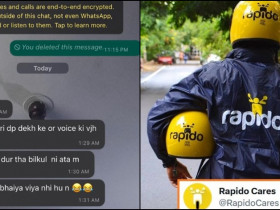No products in the cart.
How proxies help with account automation
As more marketers are realizing the potential of automating social media accounts to promote their content, some platforms have taken action to stop this. Luckily there are workarounds to overcome these restrictions.
What is account automation and how does it work?
Most commonly performed on social media platforms, account automation refers to automating marketing activities that otherwise would need to be done by human hands. Many companies use social media as a channel to promote their brand, which can be a time-consuming process.
As a result some resorted to automating individual, and even multiple accounts, with the help of third party bot software. With the benefits quickly becoming apparent in the form of time management, scheduling flexibility and increased visibility to wider audiences, the practice spread and became more popular over time.
Today, automation is a common phenomena with roughly 75% of marketers using automation tools for various purposes, including social media management.
Restrictions imposed by platforms
Twitter was one of the first platforms to catch on to this new trend and updated their policies to prohibit automated tweeting, scripting, the usage of multiple accounts and many other related activities. Most other social media companies quickly followed suit, and today such policies are standard pretty much everywhere.
This made it much harder for marketers to continue with their marketing strategies and many found themselves banned, as all accounts were created and used without any precautions in mind. Those who were lucky enough to not get suspended chose to scale down the operation significantly, or simply stuck with one primary account and resorted back to the old ways of manually handling the content promotion to a smaller audience.
The workarounds
Since the platforms started monitoring accounts more thoroughly to identify breaches against their terms and conditions, a key component for them has been to look at how many accounts operate from the same IP addresses and devices.
As social media users overwhelmingly use mobile phones, a common workaround for marketers to bypass restrictions comes in the form of proxies with cellular 4g connections. Such proxy networks contain tens of thousands of unique IP addresses belonging to mobile devices, making it next to impossible for platforms to identify and block the accounts.
Not only do proxies make it possible to operate several accounts, but they are also an important component for data collection where valuable insights can be retrieved with web scraping tools. This is great for businesses who can gather information about their customer base and use it to further tailor their content promotions and marketing approach.
How long will this be feasible?
Social media giants are continuously working on fine-tuning their bot detection algorithms and do not shy away from banning users with suspicious activity. They can now effectively detect traffic originating from commonly known malicious networks, who tend to rely on low quality proxy solutions hosted in data centers, or even free proxies shared publicly on the web.
However they have had less success with stopping tech-savvy people who understand the importance of using modern high-quality proxy pools. Proxy solutions are also adapting in accordance to the market demands, which means the game of cat and mouse between social media platforms and marketers will continue into the foreseeable future.












